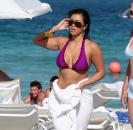|
|
|---|
Thursday, October 14, 2010

United States men's national soccer team achievement
"U.S. football team", "U.S. national football team" and "American national football team" redirect here. For the U.S. national team for American football, see United States national American football team.
| Nickname(s) | The Yanks The Stars and Stripes | |||||||||
|---|---|---|---|---|---|---|---|---|---|---|
| Association | United States Soccer Federation | |||||||||
| Confederation | CONCACAF | |||||||||
| Head coach | Bob Bradley | |||||||||
| Asst coach | Mike Sorber Lubos Kubik Jesse Marsch Pierre Barrieu Zak Abdel | |||||||||
| Captain | Carlos Bocanegra | |||||||||
| Most caps | Cobi Jones (164) | |||||||||
| Top scorer | Landon Donovan (45) | |||||||||
| FIFA code | USA | |||||||||
| FIFA ranking | 18 | |||||||||
| Highest FIFA ranking | 4 (April 2006) | |||||||||
| Lowest FIFA ranking | 35 (October 1997) | |||||||||
| Elo ranking | 25 | |||||||||
| Highest Elo ranking | 4 (November 1885 – November 1886) | |||||||||
| Lowest Elo ranking | 85 (October 1968) | |||||||||
| First international | ||||||||||
| Unofficial: (Newark, USA; November 28, 1885) Official: (Stockholm, Sweden; August 20, 1916) | ||||||||||
| Biggest win | ||||||||||
(Carson, USA; June 15, 2008) | ||||||||||
| Biggest defeat | ||||||||||
(Oslo, Norway; August 11, 1948) | ||||||||||
| World Cup | ||||||||||
| Appearances | 9 (First in 1930) | |||||||||
| Best result | Third Place, 1930 | |||||||||
| Gold Cup | ||||||||||
| Appearances | 10 (First in 1991) | |||||||||
| Best result | Champion, 1991, 2002, 2005, 2007 | |||||||||
| Confederations Cup | ||||||||||
| Appearances | 4 (First in 1992) | |||||||||
| Best result | Runner-Up, 2009 | |||||||||
Honours[show]
| ||||||||||
The team is, according to the FIFA World Rankings, ranked 18th in the world and first in CONCACAF and has appeared in the last six FIFA World Cups, including hosting the 1994 edition.
The team's best finish in the FIFA World Cup came in the inaugural 1930 tournament where it finished third. More recently, it finished fourth in the 1995 Copa América, reached the quarterfinals of the 2002
World Cup, and took second place in the 2009 Confederations Cup. The United States has won the CONCACAF Gold Cup four times in ten tournaments.
History-
In 1885, the United States and Canada played at Newark, New Jersey, making it the first international match held outside of the United Kingdom; the Canadians won the match 1-0. The following year, a fixture at the same venue resulted in the U.S. winning after scoring the only goal of the game. Thirty years later, the United States played its first official international match under the auspices of U.S. Soccer against Sweden in Stockholm, which the U.S. won 3–2.The U.S. won both the silver and gold medals in men's soccer at the 1904 Summer Olympics held in St. Louis, Missouri. The tournament featured only a three teams: Galt F.C. from Canada and Christian Brothers College and St. Rose Parish from the United States. Galt defeated both American teams to win the gold. Christian Brothers defeated St. Rose in a third match after two scoreless draws.
In the 1930 World Cup, the U.S. finished third, beating Belgium 3–0 at Estadio Gran Parque Central in Montevideo, Uruguay. The match occurred simultaneously with another across town at Estadio Pocitos where France defeated Mexico.
In the next match, the United States earned a 3-0 victory over Paraguay. For many years, FIFA credited Bert Patenaude with the first and third goals and his teammate Tom Florie with the second. Other sources described the second goal as having been scored by Patenaude or by Paraguayan Ramon Gonzales. In November 2006, FIFA announced that it had accepted evidence from "various historians and football fans" that Patenaude scored all three goals, and was thus the first person to score a hat trick in a World Cup finals tournament.
Having reached the semifinals with the two wins, the American side lost 6–1 to Argentina. Using the overall tournament records, FIFA credited the U.S. with a third place finish ahead of fellow semi-finalist Yugoslavia. The finish remains the team's best World Cup result and is tied for the highest finish of any team from outside of CONMEBOL and UEFA, the South American and European confederations, respectively.
Due to FIFA not wanting interference with the newly founded FIFA World Cup no official tournament was fielded in the 1932 Olympic Games. FIFA claimed the tournament would be popular in the United States, so it would not be cost efficient to assist in the running of the tournament during struggling economic times. As a result, an informal tournament was organized[citation needed] including local rivals with the United States finishing first, followed by Mexico and Canada. The Olympic Tournament was reinstated in the 1936 Olympic Games.
Post WWII-
In the 1950 World Cup, the United States lost its first match 3–1 against Spain, but then won 1–0 against England in what is widely considered one of the greatest upsets in football history, England having recently beaten the rest of Europe 6–1 in an exhibition match. Sports Illustrated and Soccer Digest have called the game the "Miracle on Grass," a reference to the Miracle on Ice. The older Independência Stadium, in the city of Belo Horizonte, hosted this legendary victory. At last, a defeat to Chile by a 5–2 margin in the third group match, saw the U.S. eliminated from the tournament. It would be four decades before the United States made another appearance at the World Cup Finals.1980s-
After the enthusiasm caused by the creation and rise of the North American Soccer League in the 1970s, it seemed as though the U.S. men's national team had soon become a powerful force in world soccer. Such hopes were not realized, however, and the United States was not considered a strong side in this era. From 1981 to 1983, only two international matches were played.To provide a more stable national team program and renew interest in the NASL, U.S. Soccer entered the national team into the league for the 1983 season as Team America. This team lacked the continuity and regularity of training that conventional clubs enjoy, and many players were unwilling to play for the team instead of their own clubs. Embarrassingly, Team America finished the season at the bottom of the league. Recognizing that it had not achieved its objectives, U.S Soccer cancelled this experiment, and the national team was withdrawn from the NASL.
U.S. Soccer made the decision to target the 1984 Summer Olympics in Los Angeles, California and the 1986 World Cup as means of rebuilding the national team and its fan base. The International Olympic Committee provided what appeared to be a major boost to the United States' chances of advancing beyond the group stage when it declared that Olympic teams from outside Europe and South America could field full senior teams as long as those senior players had never played in a World Cup, including professionals. U.S. Soccer immediately rearranged its Olympic roster, cutting many collegiate players and replacing them with professionals. Despite this, the U.S. finished 1–1–1 and failed to make the second round.
By the end of 1984, the NASL had folded and there was no senior outdoor soccer league operating in the United States. As a result, many top American players, such as John Kerr, Paul Caligiuri, Eric Eichmann, and Bruce Murray, moved overseas, primarily to Europe.
The United States did bid to host the 1986 World Cup after Colombia withdrew due to economic concerns. However, Mexico beat out the U.S. and Canada to host the tournament, despite concerns that the tournament would have to be moved again because of a major earthquake that hit Mexico shortly before the tournament.
In the last game of the qualifying tournament, the U.S. needed only a draw against Costa Rica, whom the U.S. had beaten 3–0 in the Olympics the year before, in order to reach the final qualification group against Honduras and Canada. U.S. Soccer scheduled the game to be played at El Camino College in Torrance, California, an area with many Costa Rican expatriates, and marketed the game almost exclusively to the Costa Rican community, even providing Costa Rican folk dances as halftime entertainment. A 35th minute goal by Evaristo Coronado won the match for Costa Rica and kept the United States from reaching its fourth World Cup finals.
In 1988, U.S. Soccer attempted to re-implement its national-team-as-club concept, offering contracts to national team players in order to build an international team with something of a club ethos, while loaning them out to their club teams, saving U.S. Soccer the expense of their salaries. This brought many key veterans back to the team, while the success of the NASL a decade earlier had created an influx of talent from burgeoning grass-roots level clubs and youth programs. Thus U.S. Soccer sought to establish a more stable foundation for participation in the 1990 World Cup than had existed for previous tournaments.
1990s: the rebirth of American soccer-
In 1989, FIFA named the United States as the host of the 1994 World Cup, but it did so under significant international criticism because of the perceived weakness of the national team and the lack of a professional outdoor league. This criticism diminished somewhat when a 1–0 win against Trinidad and Tobago, the U.S.'s first away win in nearly two years, in the last match of the 1989 CONCACAF Championship, earned the United States its first World Cup appearance in 40 years.For the 1990 World Cup in Italy, two of the team's more experienced players, Rick Davis and Hugo Perez, were recovering from serious injuries and unavailable for selection, and manager Bob Gansler selected many inexperienced players and recent college graduates. The U.S. went on to lose all three games to Czechoslovakia, Italy and Austria.
In March 1991, the United States won the North America Cup, tying Mexico 2–2 and beating Canada 2–0. This was followed in May by a 1–0 victory over Uruguay in the World Series of Soccer. The national team then went undefeated in the 1991 Gold Cup, beating Mexico 2–0 in the semifinals and Honduras 4–3 on penalty kicks after a 0–0 draw in the final. In 1992, the U.S. continued its run of success, taking the U.S. Cup with victories over Ireland and Portugal, followed by a draw with Italy.
Having qualified automatically as the host of the 1994 World Cup, the U.S. opened its tournament schedule with a 1–1 draw against Switzerland in the Pontiac Silverdome in the suburbs of Detroit, the first World Cup game played indoors. In its second game, the U.S. faced Colombia, then ranked fourth in the world, at the Rose Bowl. Aided by an own goal from Andrés Escobar, the United States won 2–1. (Escobar was later murdered in his home country, possibly in retaliation for this mistake. ) Despite a 1–0 loss to Romania in its final group game, the U.S. made it to the knockout round for the first time since 1930. In the second round, the U.S. lost 1–0 to the eventual champion Brazil.
In the 1998 World Cup in France, the team lost all three group matches, 0–2 to Germany, 1–2 to Iran, and 0–1 to Yugoslavia, and so finished in last place in its group and 32nd in the field of 32. Head coach Steve Sampson received much of the blame for the performance as a result of abruptly cutting team captain John Harkes, whom Sampson had ironically named "Captain for Life" shortly before, as well as several other players who were instrumental to the qualifying effort, from the squad. It emerged in February 2010 that Sampson removed Harkes from the team due to Harkes having an affair with teammate Eric Wynalda's wife.
21st century-
2002 World Cup Cycle-
The United States won the 2002 Gold Cup to set up the team's best performance since 1930 in the 2002 World Cup, where the U.S. team reached the quarterfinals. The team reached the knockout stage after a 1–1–1 record in the group stage. It started with a surprising 3–2 win over Portugal, followed by a 1–1 tie with co-host and eventual fourth place finisher, South Korea. It then lost its third and final match 3–1 to Poland but still qualified for the second round when Park Ji-Sung of South Korea stunned Portugal with the eventual game winning goal.This set the stage for a Second Round face-off with familiar continental rivals Mexico. Although the teams had played many times in both friendlies and in qualifying, they had never met in the World Cup. The U.S. would win the game 2-0. Brian McBride opened the scoring early in the match and Landon Donovan scored a second goal from a header off an Eddie Lewis cross. That victory advanced the team to the quarterfinals, where they met Germany. The team lost 1–0; after being denied a penalty when Torsten Frings controversially and arguably handled the ball to prevent a Greg Berhalter goal. Germany went on to finish runners-up, losing to Brazil in the final.
2006 World Cup Cycle-
The United States followed up this success by winning its third Gold Cup, and second out of three, in 2005.In the 2006 World Cup, after finishing top of the CONCACAF qualification tournament, the U.S. was drawn into Group E along with the Czech Republic, Italy, and Ghana. The United States opened its tournament with a 3–0 loss to the Czech Republic. The team then drew 1–1 against Italy,thanks to an own goal from Zaccardo, ending up being the only opponent together with France the Italian side failed to defeat in the tournament (officially, according to FIFA, France and Italy drew 1-1, although Italy won the tournament after a penalty shoot out). The United States was then knocked out of the tournament when beaten 2–1 by Ghana in its final group match.
2010 World Cup Cycle-
After failing to maintain his 2002 success at the 2006 World Cup, Bruce Arena was eventually replaced by his assistant with the national team and Chivas USA manager, Bob Bradley, whose reign began with four wins and one draw in friendlies leading up to the 2007 Gold Cup, hosted by the United States.The U.S. won all three of its group stage matches, against Guatemala, Trinidad and Tobago, and El Salvador. With a 2–1 win over Panama in the quarterfinals, the U.S. advanced to face Canada in the semifinals, winning 2–1. In the final, the United States came from behind to beat Mexico 2–1.
The team's disappointing Copa América 2007 campaign ended after three defeats in the group stage to Argentina, Paraguay, and Colombia. The decision by U.S. Soccer to field what many considered a second-tier team was questioned by fans and media alike.
One of the hallmarks of Bradley's tenure as national team manager has been his willingness to cap a large number of players, many for their first time. This practice has been praised by those wanting to see a more diverse player pool for the national team, as well as criticized by those hoping for more consistency and leadership from core players. This has coincided with many young American players like Freddy Adu, Jozy Altidore, Clint Dempsey, Maurice Edu, Brad Guzan, Eddie Johnson, and Michael Parkhurst making their first moves from MLS to European clubs, meaning that more American players are gaining experience at the highest levels of club and international soccer than at any other time in the team's history.
In Summer 2009, the United States had one of the busiest stretches in its history. For the 2009 Confederations Cup the U.S. was drawn into Group B with Brazil, Egypt, and Italy. After losing 3–1 to Italy and 3–0 to Brazil, the United States made an unlikely comeback to finish second in the group and reach the semi-final on the second tie-breaker, goals scored, having scored four goals to Italy's three. This was achieved on the final day of group play when the United States beat Egypt 3–0 while Brazil beat Italy 3–0.
In the semifinals, the U.S. defeated Spain 2–0. At the time, Spain was atop the FIFA World Rankings and was on a record run of 15 straight wins and 35 games undefeated (a record shared with Brazil). With the win, the United States advanced to its first-ever final in a men's FIFA tournament; however, the team lost 3–2 to Brazil after leading 2–0 at half-time.
Only a few days after the Confederations Cup Final, the United States hosted the 2009 Gold Cup, and was drawn into Group B with Grenada, Haiti, and Honduras. Due to the fact that the U.S. had just played in the Confederations Cup and still had half of its World Cup qualifying campaign to go, Bob Bradley chose a side consisting of mostly reserves who had never really played together on the international stage and was criticized for selecting a "B Side" for the Continental tournament. The U.S. began group play with a pair of victories over Grenada and Honduras, and won the group with a draw against Haiti.
In the quarterfinals, the United States defeated Panama 2–1 after extra time. In the semifinals the U.S. faced Honduras for the second time in the tournament, and the third time in less than two months. The United States beat Honduras 2–0 and advanced to its third consecutive Gold Cup final where the team faced Mexico in a rematch of the 2007 Gold Cup final. The United States was beaten by Mexico 5–0, surrendering its 58-match unbeaten streak against CONCACAF opponents on U.S. soil. It was also the first home loss to Mexico since 1999.
2010 World Cup qualification-
Main articles: 2010 FIFA World Cup, 2010 FIFA World Cup qualification (CONCACAF), and 2010 FIFA World Cup qualification - CONCACAF Fourth Round
|
|
- Qualification:
- The United States qualified for the 2010 FIFA World Cup.
The U.S. began the Fourth Round by defeating Mexico 2–0, a win that extended the United States' unbeaten streak against Mexico on U.S. soil to 11 matches. Six weeks later, in the second match of the Fourth Round, the United States made a late rally to earn a 2–2 draw away to El Salvador. Four days later, Jozy Altidore became the youngest U.S. player to score a hat-trick, and lead the United States to a 3–0 victory over Trinidad and Tobago. Following another six week break from qualifying, the U.S. travelled to Costa Rica, where they were soundly defeated 3–1. The United States rebounded three days later when they defeated Honduras 2–1. When qualifying resumed near the end of the summer of 2009, the United States suffered a 2–1 loss to Mexico at Estadio Azteca. A few weeks later, the United States came from behind to defeat El Salvador 2–1 at home after being down 1–0. The next week, the U.S. beat Trinidad and Tobago 1–0. On October 10, 2009, the United States secured qualification to the World Cup with a 3–2 win over Honduras. Four days later, the U.S. secured first place in the Fourth Round with a dramatic 2–2 draw against Costa Rica.
2010 FIFA World Cup-
Main article: 2010 FIFA World Cup Group C
|
After tying matches against England (1–1) and Slovenia (2–2), USA beat Algeria through an injury time goal and thus won Group C, the 1st time that the USA has won its World Cup group since 1930. In the round of 16, USA lost to Ghana, with Ghana once again winning 2-1, thus kicking the USA out of the World Cup.
On July 13, FIFA released their post tournament ranking of World Cup teams and the USA finished in 12th place. This finish was one spot above fellow Group C side England and two above CONCACAF rival Mexico.
2014 World Cup Cycle-
As a result of his performance during the previous four year cycle, Bob Bradley signed a four year contact extension in early September of 2010, though rumors emerged that Bradley had resigned, and as in 2006; that former Germany coach Jürgen Klinsmann would be hired to coach the team. However, these rumors never came to fruition, as Bradley was officially re-signed by US Soccer 3 days after federation president Sunil Gulati was reported to have met with Klinsmann about taking over as coach. Prior to his re-appointment, Bradley and the US team got the cycle underway with a 2-0 defeat to Brazil in the New Meadowlands Stadium.FIFA World Cup · 2010 Algarve Cup · FIFA World Cup Qualifying · FIFA Under-20 World Cup ... U.S. SOCCER 2010, All Rights Reserved.
By the numbers The history of the US national soccer team is more long than ... on which American fans can hang their hats: winning World Cup qualifying ...
7 Sep 2010 ... Like USA soccer news? Subscribe to the USA World Cup RSS feed Rss , or get email updates by entering your address ... Oct 14th, 2010 | Read more Read this article. .... MORE NORTH AMERICA BLOGS. USA World Cup Team Blog
Two established European goal-getters and a 17-year-old American hopeful feature in ... Get free and unlimited access to the 2010 FIFA World Cup mode in EA ... love soccer so much I played in the team of my city when i was a child..
Labels: picture and history., usa football news, vedio
0 Comments:
Subscribe to:
Post Comments (Atom)


















